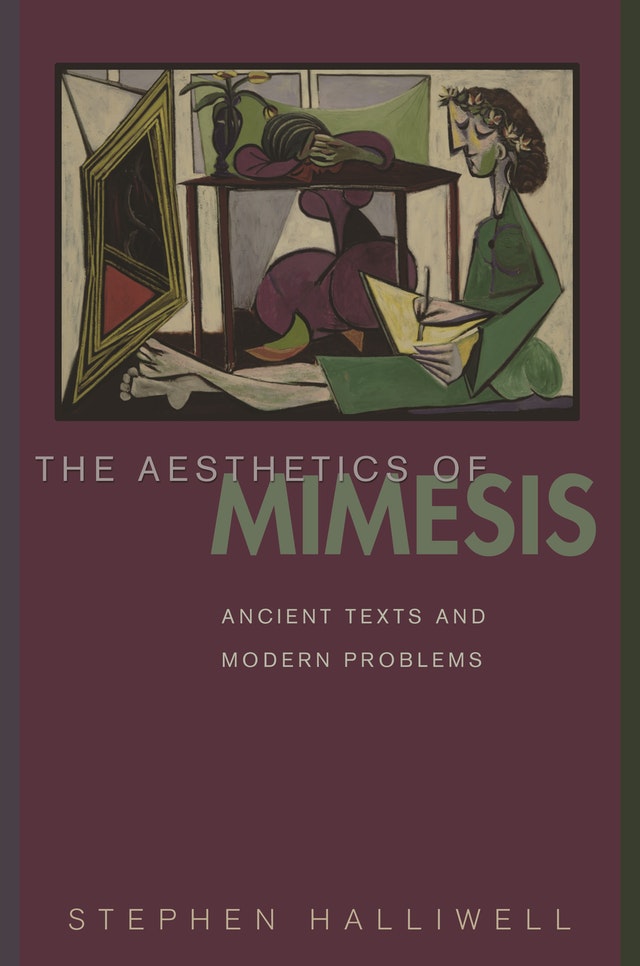
In my work in progress on Lascaux, Altamira and Chauvet it has not been easy to find a word with which to talk about the various representations of these painted caves. But, I was recently reminded of the word mimesis since it is one of the earliest art historical terms, and, as I learned from this erudite book, mimesis is best thought of as a familial framework of ideas, through which we might sometimes speak of imitation and copying, sometimes of representation or description, and sometimes of expression and interpretation.
Plato’s ideas around mimesis, frequently thought of as a monolithic dismissal of poetry, are themselves shown to be complex here, and he allows for a way of rendering the real world, through poetry or painting, that is, in itself, not degenerate at all, but, rather, ethical and good. Later Aristotle took up this term mimesis and gave it a twofold definition: encompassing external reality and internal logic – the Greek tragedy, for instance, should offer a true sense of the world and an audience response governed by the artwork’s structure
In the first two parts of The Aesthetics of Mimesis, Halliwell explodes this dusty academic term and offers a dazzling array of the varied thinking of the ancient world. From its beginnings, poetry, and by extension painting, was understood to deal in hypothetical yet emotive realities. As long we have recorded notions about art, art could be said to simulate the world, as much as to reflect it. Whereas Plato famously thought of poetry as a potential negative influence, he also looked for correctness, mental benefits and pleasurable qualities in the sphere of art. Plato did not equate mimesis to verisimilitude; instead he looked for the ‘what’, ‘how, and ‘what for’ of form and beauty: these questions remain relevant to any 21st attempt to write art criticism. He wasn’t convinced by visual illusion, so mimesis has in fact never been about simply mirroring external realities; confounding what I had assumed to be the case. Aristotle later saw the work, whether written or painted, as both a performance and an intention. (Mimesis is, of course, applicable to acting, human learning, and music.) He was to argue that likeness need not be literal minded and so I hope to show by these examples, of which there are many in the book, just how complex and lively the debates of Ancient Greece remain today.
Having said that, mimesis is not what it used to be. Leonardo da Vinci criticises fidelity to appearances. The Romantics gave up all attempts to depict the world out there and made expressive pictures and poems about the inner life, and for the Moderns there was no going back to the aim of mirroring nature. But that had never been the primary aim of mimesis, after all. We now live in what has been called a post-mimetic era. And yet the impact of both romanticism and modernism is show in these pages to have been more gradual and inconsistent than you might imagine. In the third and final part of his book, Professor Halliwell shows that, although Plato and Aristotle had the most to say about mimesis, the idea did not spring up with their arrival, and nor did it vanish with the passing of neo-Platonism.
Perhaps most interesting is the encounter between mimesis and a thinker frequently engaged with on this blog. Derrida is oft said to unsettle the foundations of Western civilisation by destabilising, among other of his tenets, Plato’s conception of truth in poetry/painting. But this idea can be destabilised in turn because 1) Western thought is perhaps equally indebted to Aristotle and owes a further debt to an array of philosophers from the ancient world; and 2) Plato himself takes up a number of evolving positions in his writings about mimesis beyond the most familiar passages in The Republic. Perhaps I have got this wrong, and I invite comments which qualify this short review. I have tried to represent The Aesthetics of Mimesis, but I don’t promise to show things as they (really) are.
This title is from Princeton University Press (2002) and read via Kindle.
No Comments